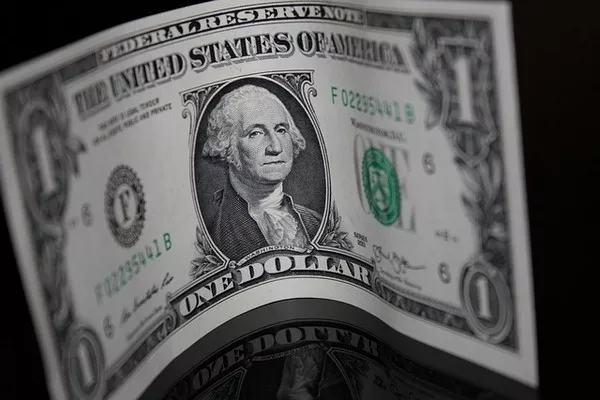In the realm of numismatics, the study and collection of currency, certain bills and coins become coveted artifacts due to their rarity, historical significance, or unique features. Among these treasures are the $2 bills issued in 1953. While the face value of such a bill is self-evident, its collectible worth can far exceed its nominal value. This article explores the factors that determine the value of a 1953 $2 bill, providing insights into the world of currency collecting and valuation.
Historical Context: The 1953 $2 Bill
The $2 bill issued in 1953 was part of a series of United States currency that featured Thomas Jefferson, the third President of the United States, on the front. The reverse side prominently displayed John Trumbull’s iconic painting “The Signing of the Declaration of Independence.” This design, along with subsequent variations, has made the 1953 $2 bill a notable piece of American monetary history.
Understanding Rarity
One of the primary factors influencing the value of any collectible currency is its rarity. In the case of the 1953 $2 bill, rarity can stem from several aspects:
Series Type: The 1953 $2 bill was printed in two series:
- Series 1953
- Series 1953A
Each series had its own distinct features and variations, contributing to differences in collectibility and value.
Print Volume: The total number of bills printed for a specific series and year can greatly influence rarity. Bills with lower print numbers are typically scarcer and, therefore, more valuable to collectors.
Condition and Circulation: The condition of a bill also plays a crucial role. Uncirculated bills in pristine condition will generally command higher prices than those that have been heavily circulated.
Grading and Condition
The condition of a 1953 $2 bill is evaluated based on a standardized grading system used by numismatists. This system assesses factors such as:
Crispness: The freshness and sharpness of the bill’s printing.
Centering: The alignment of the printing on the bill.
Folds and Creases: The presence of folds or creases, which can detract from its overall appearance.
Discoloration: Any signs of aging or discoloration.
Bills in mint condition (graded as “Gem Uncirculated” or “CU” for Crisp Uncirculated) will command the highest values within the collector market. Conversely, bills with visible wear and tear may be less valuable.
Series and Variations
As previously mentioned, the 1953 $2 bill was printed in two series: 1953 and 1953A. Variations within these series, such as differences in signatures, Federal Reserve districts, or minor design modifications, can also impact a bill’s rarity and desirability among collectors.
For example, certain series or district combinations may be scarcer due to lower print runs or specific historical circumstances. Bills featuring rarer combinations often fetch higher prices at auctions or through private sales.
Demand and Collector Market
The value of a 1953 $2 bill is ultimately determined by the interplay between its rarity and the demand from collectors. Factors that influence demand include:
Historical Significance: Bills associated with significant historical events or periods may attract greater interest from collectors.
Aesthetic Appeal: Unique design elements or exceptional printing quality can enhance a bill’s desirability.
Cultural or Regional Connections: Bills that resonate with specific regions or communities may have increased demand within those demographics.
Pricing and Market Trends
Determining the precise value of a 1953 $2 bill requires research into current market trends and recent auction results. Prices can fluctuate based on factors such as:
Collector Trends: Shifting interests within the numismatic community can influence prices.
Economic Conditions: Overall economic stability and inflation rates can impact the perceived value of collectible currency.
Availability: The frequency of similar bills appearing on the market can affect pricing dynamics.
Authenticity and Certification
To ensure the legitimacy and value of a 1953 $2 bill, collectors often seek bills that have been authenticated and graded by reputable third-party grading services. These services provide:
Authenticity Verification: Confirming that the bill is genuine and not a counterfeit.
Condition Grading: Assigning a standardized grade based on established criteria.
Certified bills typically come with documentation that details their provenance and condition, adding to their appeal and market value.
Examples of Valuable 1953 $2 Bills
Several notable examples highlight the potential value of 1953 $2 bills in today’s collector market:
Low Serial Numbers: Bills with low serial numbers, especially those from the first print runs of a series, can command significant premiums due to their scarcity.
Exceptional Condition: Crisp, uncirculated bills with minimal signs of wear often sell for higher prices compared to circulated counterparts.
Rare Variations: Bills featuring unusual signatures, printing errors, or distinct design elements may attract specialized collectors willing to pay a premium.
See Also What Is The Best Investment For A Weak Dollar?
Conclusion
In conclusion, the value of a 1953 $2 bill is determined by a complex interplay of factors, including rarity, condition, demand, and market trends. While most 1953 $2 bills can be readily obtained for slightly above face value, certain variations and pristine examples can command substantial premiums within the numismatic community.
For collectors and enthusiasts alike, the allure of a 1953 $2 bill extends beyond its nominal worth, offering a tangible connection to America’s rich monetary history. By understanding the nuances of rarity, grading, and market dynamics, collectors can navigate this fascinating realm of currency appreciation with confidence and discernment.


